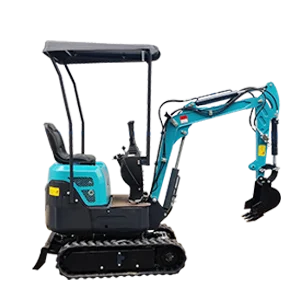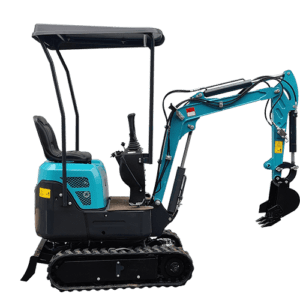Email: [email protected] Whatsapp: 8618266768780
How a 1T Excavator Can Boost Productivity in Tight Spaces
Welcome to My Blog!
Before we dive into the content, I’d love for you to join me on my social media platforms where I share more insights, engage with the community, and post updates. Here’s how you can connect with me:
Facebook: https://www.facebook.com/profile.php?id=100072217509763
LinkedIn: https://www.linkedin.com/company/74949059/admin/dashboard/
YouTube:https://www.youtube.com/@tractormanufacturer-lc5qz
TikTok: https://www.tiktok.com/@tractormanufacturer
Now, let’s get started on our journey together. I hope you find the content here insightful, engaging, and valuable.
Introduction
In today’s fast-paced construction and landscaping industry, efficiency and productivity are key. As job sites become smaller and more compact, especially in urban areas, the demand for versatile and compact machinery continues to grow. One of the most effective machines for working in tight spaces is the 1T excavator. Known for its small size, maneuverability, and powerful performance, the 1T excavator is ideal for a variety of tasks such as digging, trenching, grading, and even demolition.
In this blog, we’ll explore how a 1T excavator can significantly enhance productivity in tight spaces, providing insights into its key features, benefits, and applications. We’ll also discuss how to choose the right 1T excavator for your specific needs, ensuring that you get the best performance out of your equipment.
What is a 1T Excavator?

A 1T excavator, also known as a mini excavator, is a compact piece of construction machinery that typically weighs around 1 ton (1,000 kilograms). Designed for precision work in confined spaces, the 1T excavator is equipped with a hydraulic system that allows for digging, lifting, and other tasks while providing the maneuverability needed to operate in small areas.
Key Features of a 1T Excavator
- Compact Size: The small footprint of a 1T excavator allows it to navigate narrow passages, fit through doorways, and operate in tight spaces such as residential backyards or urban construction sites.
- Maneuverability: Its small size, combined with its 360-degree rotation capability, allows the 1T excavator to work in confined areas where larger machines cannot.
- Hydraulic System: The hydraulic system provides the necessary power to perform tasks such as digging, trenching, and lifting with precision and ease.
- Versatility: The 1T excavator can be equipped with various attachments, including buckets, augers, and breakers, making it adaptable to different job requirements.
Advantages of Using a 1T Excavator in Tight Spaces
Increased Efficiency in Confined Areas
One of the main benefits of using a 1T excavator in tight spaces is its ability to enhance efficiency. Due to its compact size and lightweight design, the 1T excavator can access areas that would be impossible for larger machines. This means that you can complete tasks such as digging foundations, trenches, or utility lines without needing to clear large areas or disrupt surrounding structures.
Example Applications:
- Residential Landscaping: For tasks such as digging garden beds, installing irrigation systems, or constructing small retaining walls, the 1T excavator can navigate through narrow garden pathways and between existing structures.
- Urban Construction: In densely populated urban environments, where space is at a premium, the 1T excavator can easily operate in alleyways, basements, or other confined spaces that larger machines would struggle to access.
Enhanced Maneuverability for Precision Work
The 1T excavator is designed for precision work in confined spaces, making it the ideal machine for tasks that require careful maneuvering. Its 360-degree rotation allows for seamless movement and operation in narrow or awkward spaces without needing to reposition the entire machine. This results in faster project completion and reduced labor costs.
Precision and Control:
- Tight Turning Radius: The 1T excavator’s small turning radius ensures that it can work efficiently in tight spaces, such as between buildings or in small trenches, without damaging surrounding structures or landscapes.
- Minimal Ground Disturbance: Its lightweight design reduces the risk of ground damage, making it ideal for projects in delicate or landscaped areas where preserving the surroundings is essential.
Versatility with Attachments
Another major advantage of the 1T excavator is its ability to handle various tasks through the use of different attachments. By switching out the standard bucket for specialized tools like augers, hammers, or grading blades, operators can perform a wide range of functions with a single machine, maximizing the excavator’s versatility on-site.
Common Attachments and Their Benefits:
| Attachment | Use Case | Benefit |
|---|---|---|
| Standard Bucket | Digging trenches, foundations, and holes | Ideal for general digging tasks and material handling |
| Auger | Drilling holes for posts, fences, and foundations | Provides precision in drilling tasks |
| Hydraulic Breaker | Demolition of concrete, rocks, or asphalt | Efficient demolition in confined spaces |
| Grading Blade | Smoothing and leveling surfaces | Ensures precision in grading and surface preparation |
| Tiltrotator | Enhanced maneuverability and flexibility | Allows for more complex movements and angles |
The ability to quickly switch between these attachments means that operators can complete a wide range of tasks without the need for multiple machines, further boosting productivity and reducing downtime.
Cost-Effectiveness and Reduced Operating Costs
While large machines often come with higher purchase and operating costs, the 1T excavator offers a more cost-effective solution for smaller-scale projects or tight-space applications. Its fuel efficiency and lower maintenance requirements make it an economical choice for contractors and operators looking to maximize their return on investment.
Reduced Costs in:
- Fuel Consumption: The 1T excavator’s smaller engine size means that it uses less fuel compared to larger machines, helping to lower operating costs over time.
- Maintenance: Due to its simpler design and fewer moving parts, the 1T excavator typically requires less maintenance, reducing the risk of costly repairs and downtime.
- Transport: Its compact size and lightweight design make it easier and cheaper to transport to job sites compared to larger equipment.
Minimal Disruption to Surroundings
When working in residential areas or spaces with existing structures, minimizing disruption to the surrounding environment is critical. The 1T excavator’s lightweight and compact design help to reduce noise, emissions, and ground disturbance, ensuring that the machine can operate in sensitive environments without causing significant damage.
Benefits in Urban and Residential Settings:
- Noise Reduction: Smaller engines produce less noise, making the 1T excavator a preferred choice for projects in noise-sensitive areas such as residential neighborhoods.
- Low Emissions: Many 1T excavators are designed to meet stringent emission standards, ensuring environmentally friendly operation in urban settings.
- Preservation of Surrounding Areas: The 1T excavator’s minimal footprint helps to protect lawns, gardens, and other landscaped areas from damage during excavation or construction activities.
How to Choose the Right 1T Excavator for Your Project

Selecting the right 1T excavator for your specific project involves evaluating several factors, including the type of job, required attachments, and overall budget. Here are some key considerations to keep in mind:
Understand Your Project Needs
Before selecting a 1T excavator, consider the nature of your project. Are you digging trenches, moving earth, or breaking concrete? Identifying your primary task will help you determine the necessary specifications and attachments required to complete the job.
Consider Attachments
Choosing a 1T excavator with the right attachment options can significantly increase its versatility. Ensure that the machine can be equipped with the necessary tools, such as augers, hammers, or grading blades, to meet the demands of your project.
Evaluate the Job Site
Consider the size and layout of your job site. If you’re working in extremely confined spaces, you’ll want a machine with a tight turning radius and excellent maneuverability. Check the available width of pathways or entry points to ensure that the excavator can easily access the job site.
Prioritize Operator Comfort
While productivity is a top priority, operator comfort is also important. Choose a 1T excavator that provides ergonomic controls, a comfortable cab, and easy visibility. Machines that are easier to operate can reduce fatigue and improve overall productivity.
Assess Your Budget
Finally, consider your budget, including both upfront costs and long-term operating expenses. While it may be tempting to choose the cheapest option, investing in a quality 1T excavator that meets your project’s needs will often save money in the long run by reducing downtime, maintenance costs, and fuel consumption.
Conclusion
The 1T excavator is an invaluable piece of equipment for construction, landscaping, and demolition projects where space is limited. Its compact size, maneuverability, and versatility make it the perfect choice for tight spaces, allowing operators to maximize productivity while minimizing disruption to surrounding environments. With the right attachments and proper maintenance, a 1T excavator can handle a wide range of tasks efficiently, making it a cost-effective and reliable solution for any small-scale project.
FAQ
What is a 1T excavator typically used for?
A 1T excavator is used for various tasks, including digging, trenching, grading, and demolition. Its compact size makes it ideal for working in tight spaces, such as residential backyards, urban construction sites, or inside buildings.
How much space does a 1T excavator need to operate?
Due to its small footprint and tight turning radius, a 1T excavator can operate in very confined areas, often requiring only a few feet of clearance to perform its tasks efficiently.
Can a 1T excavator handle heavy-duty tasks?
While 1T excavators are compact and designed for smaller projects, they can still handle a range of heavy-duty tasks with the right attachments, including breaking concrete, drilling holes,
and moving large volumes of earth.
How do I maintain a 1T excavator?
Regular maintenance includes checking hydraulic fluids, inspecting the undercarriage for wear, lubricating moving parts, and ensuring that attachments are properly installed and maintained. Following the manufacturer’s maintenance guidelines will help prolong the life of your 1T excavator.
What are the advantages of using a 1T excavator in urban environments?
The main advantages include its ability to navigate tight spaces, reduced noise levels, lower emissions, and minimal ground disturbance. These factors make it ideal for use in residential areas, busy urban sites, or other noise-sensitive environments.
About Us
Shandong Qilu Industrial Co., Ltd. is a professional manufacturer and exporter integrating the development and production of excavators, loaders and tractors. We provide the best service, absolutely.
Recent Posts
Video demo
-1.png)
Contact Us Today!
Any question, quote or inquiry? Click the button to send message.
Qilu Industrial will always here to help.



